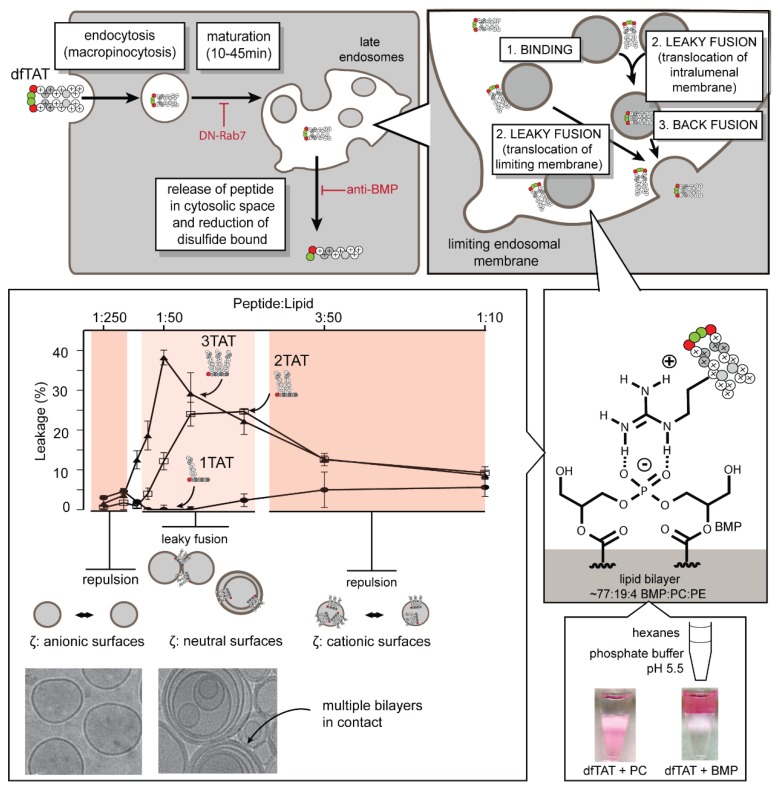Figure 2.
Model of how dfTAT causes the leakage of late endosomes through interactions with the anionic lipid bis(monoacylglycero)phosphate (BMP). dfTAT is taken up by the cell primarily via macropinocytosis. It is then trafficked along the endocytic pathway to late endosomes, which is a process that spans an approximate 10–45 min time window. dfTAT causes the leaky fusion of late endosomal membranes. The nature of this process remains unclear and may hypothetically involve the translocation at the limiting membrane of the late endosomes, or the translocation of intralumenal vesicles. In vitro, dfTAT selectively permeabilizes lipid bilayers that contain the late endosomal anionic lipid BMP. Permeabilization involves leaky fusion, which is a process where peptides displaying several CPP copies (e.g., 2TAT and 3TAT) can neutralize anionic bilayers and bring them into contact. Permeabilization may also relate to the unique ability of dfTAT and BMP to partition into hydrophobic environments. In particular, dfTAT partitions into hexanes with BMP, but not with the lipid phosphatidylglycerol (PG), which is a structural isomer of BMP (hexanes, as shown in the figure, mimic the hydrophobic tails of lipids). PC: phosphatidylcholine; PE: phosphotidylethanolamine.

